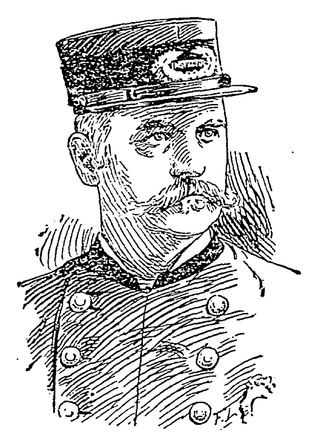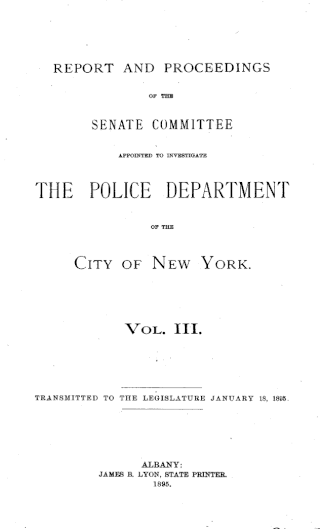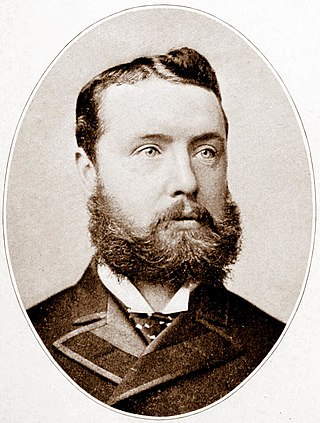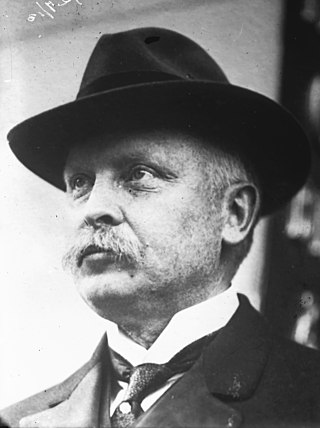
Tammany Hall, also known as the Society of St. Tammany, the Sons of St. Tammany, or the Columbian Order, was an American political organization founded in 1786 and incorporated on May 12, 1789, as the Tammany Society. It became the main local political machine of the Democratic Party and played a major role in controlling New York City and New York state politics. It helped immigrants, most notably the Irish, rise in American politics from the 1850s into the 1960s. Tammany usually controlled Democratic nominations and political patronage in Manhattan for over 100 years following the mayoral victory of Fernando Wood in 1854, and used its patronage resources to build a loyal, well-rewarded core of district and precinct leaders; after 1850, the vast majority were Irish Catholics due to mass immigration from Ireland during and after the Irish Famine of the late 1840s.

The Tenderloin was an entertainment and red-light district in the heart of the New York City borough of Manhattan during the late 19th and early 20th centuries.

William Sulzer, nicknamed Plain Bill, was an American lawyer and politician. He was the 39th governor of New York and a long-serving U.S. representative from the same state. Sulzer was the first, and to date only, New York governor to be impeached and the only governor to be convicted on articles of impeachment. He broke with his sponsors at Tammany Hall, and they produced convincing evidence that Sulzer had falsified his sworn statement of campaign expenditures.

Anthony Comstock was an American anti-vice activist, United States Postal Inspector, and secretary of the New York Society for the Suppression of Vice (NYSSV), who was dedicated to upholding Christian morality. He opposed obscene literature, abortion, contraception, masturbation, gambling, prostitution, and patent medicine. The terms comstockery and comstockism refer to his extensive censorship campaign of materials that he considered obscene, including birth control advertised or sent by mail. He used his positions in the U.S. Postal Service and the NYSSV to make numerous arrests for obscenity and gambling. Besides these pursuits, he was also involved in efforts to suppress fraudulent banking schemes, mail swindles, and medical quackery.

Richard Welstead Croker, known as "Boss Croker", was an Irish American political boss who was a leader of New York City's Tammany Hall. His control over the city was cemented with the 1897 election of Robert A. Van Wyck as the first mayor of all five boroughs. During his tenure as Grand Sachem, Boss Croker garnered a reputation for corruption and ruthlessness and was frequently the subject of investigations. As his power waned following the 1900 and 1901 elections, Croker resigned his position and returned to Ireland, where he spent the rest of his life.
The history of New York City (1855–1897) started with the inauguration in 1855 of Fernando Wood as the first mayor from Tammany Hall, an institution that dominated the city throughout this period. Reforms led to the New York City Police Riot of June 1857. There was chaos during the American Civil War, with major rioting in the New York Draft Riots. The Gilded Age brought about prosperity for the city's upper classes amid the further growth of a poor immigrant working class, as well as an increasing consolidation, both economic and municipal, of what would become the five boroughs in 1898.

During the years of 1898–1945, New York City consolidated. New York City became the capital of national communications, trade, and finance, and of popular culture and high culture. More than one-fourth of the 300 largest corporations in 1920 were headquartered there.

Charles Becker was a lieutenant in the New York City Police Department between the 1890s and the 1910s. He is known for the scandal of being convicted of first-degree murder and subsequently executed for the killing of Herman Rosenthal, a bookmaker and gambler, in 1912 near Times Square.

Lexow Committee was a major New York State Senate probe into police corruption in New York City. The Lexow Committee inquiry, which took its name from the committee's chairman, State Senator Clarence Lexow, was the widest-ranging of several such commissions empaneled during the 19th century. The testimony collected during its hearings ran to over 10,000 pages and the resultant scandal played a major part in the defeat of Tammany Hall in the elections of 1894 and the election of the reform administration of Mayor William L. Strong. The investigations were initiated by pressure from Charles Henry Parkhurst.

John William Goff Sr. was an American lawyer and judge from New York City.

Charles Henry Parkhurst was an American clergyman and social reformer, born in Framingham, Massachusetts. Although scholarly and reserved, he preached two sermons in 1892 in which he attacked the political corruption of New York City government. Backed by the evidence he collected, his statements led to both the exposure of Tammany Hall and to subsequent social and political reforms.

The Committee of Fifteen was a New York City citizens' group formed in November 1900 to combat prostitution and gambling. Established by influential members of New York's upper class, the Committee aimed to expose and reduce vice within the city, focusing particularly on areas where police corruption and political protection facilitated illegal activities. Through a combination of undercover investigations and public advocacy, the Committee gathered extensive evidence on urban vice, eventually presenting its findings to Governor Benjamin Barker Odell, Jr. in 1901. While the Committee disbanded later that year, its findings influenced the creation of the Committee of Fourteen, which took up the cause. The Committee of Fifteen's report, The Social Evil With Special Reference to Conditions Existing in the City of New York, published in 1902, became a cornerstone document for early 20th-century urban reform.

Hugh John Grant served as the 88th mayor of New York City for two terms from 1889 to 1892. First inaugurated at age 30, he remains the youngest mayor in the city's history. He was one of the youngest mayors of a major American city, and was the second Roman Catholic mayor of New York City.

Timothy Daniel Sullivan was a New York politician who controlled Manhattan's Bowery and Lower East Side districts as a prominent leader within Tammany Hall. He was known euphemistically as "Dry Dollar", as the "Big Feller", and later as "Big Tim" because of his physical stature. He amassed a large fortune as a businessman running vaudeville and legitimate theaters, as well as nickelodeons, race tracks, and athletic clubs.

Frank Moss was an American lawyer, reformer and author. He was involved in many of the reform movements in New York City shortly before the start of the 20th century up until his death. As a longtime assistant to District Attorney Charles S. Whitman, he was involved in several high-profile criminal cases such as the Rosenthal murder trial in which police detective Charles Becker was found guilty of murder and executed.

William McGlory was an American saloon keeper and underworld figure in New York City during the mid-to late 19th century. He was well known in The Bowery and Five Points districts, owning a number of popular establishments throughout the city, most notably McGlory's Armory Hall, a popular Bowery hangout for members of the underworld in the old Fourth and Sixth Wards.

John A. Hennessy, was a newspaper editor and a special investigator for Governor Sulzer in the Tammany Hall corruption trial of 1913.
Peter Johnson Sr. was an American lawyer.
Debbie Viguié is an American author, known for co-writing the Wicked series with Nancy Holder.

The Hate U Give is a 2017 young adult novel by Angie Thomas. It is Thomas's debut novel, expanded from a short story she wrote in college in reaction to the police shooting of Oscar Grant. The book is narrated by Starr Carter, a 16-year-old African-American girl from a poor neighborhood who attends an elite private school in a predominantly white, affluent part of the city. Starr becomes entangled in a national news story after she witnesses a white police officer shoot and kill her childhood friend, Khalil. She speaks up about the shooting in increasingly public ways, and social tensions culminate in a riot after a grand jury decides not to indict the police officer for the shooting.

















